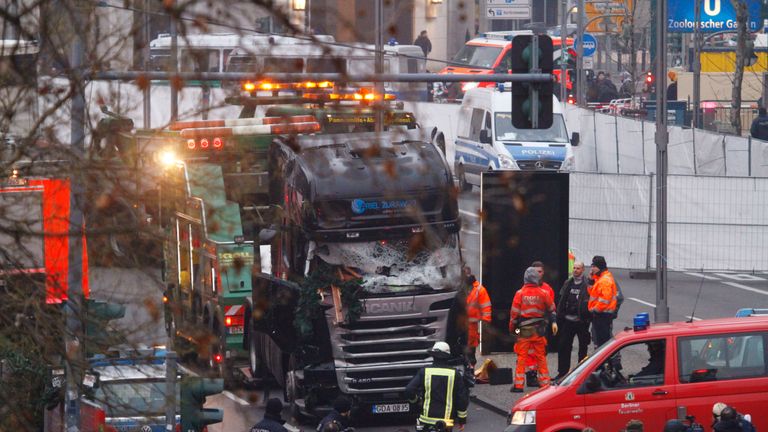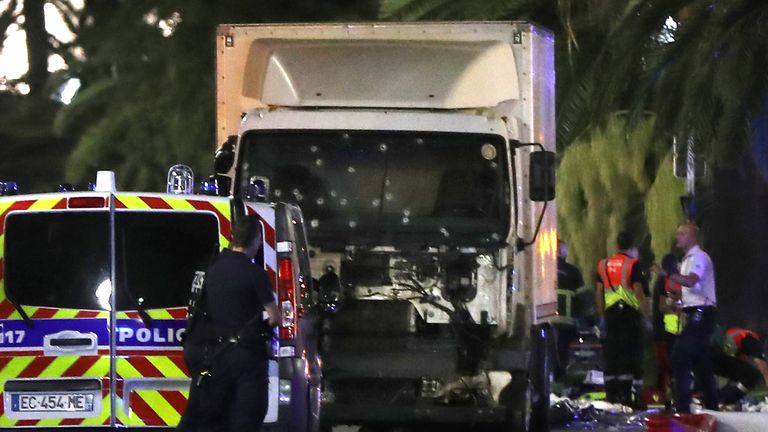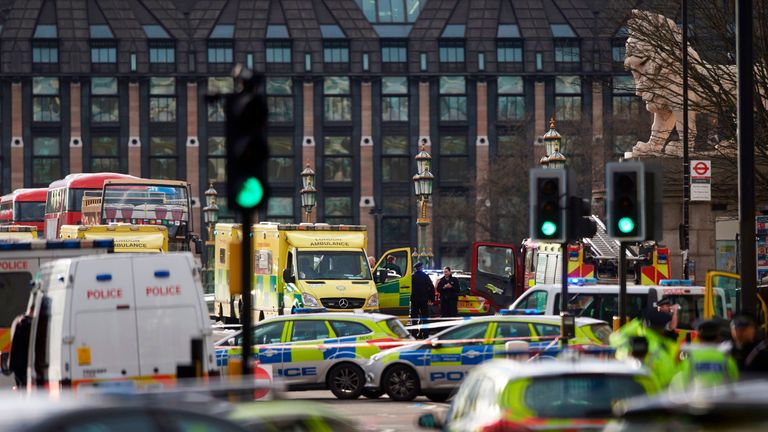Spain terror attacks: Vehicles becoming terror weapon of choice
Vehicles are easy to acquire and the effects can be every bit as deadly as a gun or bomb atrocity, writes Sky's Mark White.
Friday 18 August 2017 16:01, UK
Vehicles have become the weapon of choice for many terrorists hoping to fly under the radar of the security services.
They are easy to acquire and the effects can be every bit as deadly as a gun or bomb atrocity.
From Nice to Berlin, London and now Barcelona, increasing numbers of cities have witnessed just how horrific attacks launched from behind the wheel can be.
For the police and security services, plots involving the use of vehicles pose a particular headache; they are extremely difficult to track.
Those more traditional plots using explosives and firearms often leave telltale intelligence trails that authorities can pick up on more easily.
A terrorist planning to build a bomb must purchase the ingredients - and systems are in place in many European cities to flag up the purchase of certain chemicals, or other bomb-making components.
::
Bombers who launched the 7/7 attacks in London in 2005 used hydrogen peroxide as a main ingredient of their four devices. The chemical is commonly used as a bleaching agent by hairdressers.
After the London attacks, the UK authorities established a warning system to flag up unusually large purchases of the chemical.
More sophisticated bomb or firearms plots also usually involve multiple people, if not in the attack itself then certainly in the planning or construction of devices, or the purchasing of weapons.
The uncomfortable truth about less sophisticated plots is that they can be almost impossible to detect, if an individual does not conspire with others.
After all, a car or van can easily be hired or stolen in an instant and used to kill and injure moments later.
Vehicles were used in three of the four recent attacks in the UK. In Westminster, London Bridge and Finsbury Park, the attacks succeeded, catching the authorities off guard.
There are ongoing inquiries into whether warning signs were there and missed.
In truth, the police and security services are face with an agonisingly difficult choice on a daily basis.
There are, according to UK authorities, more than 3,000 extremists across the UK who could turn to violence.
The police and security services have limited resources, they simply cannot keep an eye on everyone. They have to choose who to priorities and to keep under closer surveillance.
The picture in the UK is repeated in numerous European countries, and dealing with a growing terror threat that can be difficult to track is something security chiefs across the continent are now grappling with.
Many European capitals are learning the hard way that, in the absence of good intelligence on the growing number of unsophisticated plots, other measures must be taken to mitigate the damage their attacks can cause.
In Britain, France and Germany, reinforced bollards and other more discreet street furniture is now being erected at entrances and exits to crowded areas - the idea being that if an attacker gets behind the wheel, they will at least be stopped from causing carnage in some of the busiest areas.
Authorities in Barcelona had yet to implement similar vehicle barriers along the route of this latest attack.
In the months ahead, the many tourists who flock to this beautiful Catalonian city will be faced with that less than attractive concrete infrastructure.
It might not be pretty to look at, but it could keep people safe from those who increasingly using vehicles to cause death and destruction.






